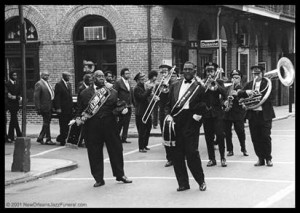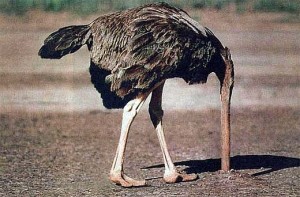Six years ago I wrote a Wall Street Journal column called “Can Jazz Be Saved?” that was misread, misunderstood, misquoted, and dismissed by large numbers of shortsighted musicians who were determined not to face the facts.
 Contrary to widespread popular belief, I didn’t say anywhere in that column that jazz is dead. This is what I really said:
Contrary to widespread popular belief, I didn’t say anywhere in that column that jazz is dead. This is what I really said:
It’s no longer possible for head-in-the-sand types to pretend that the great American art form is economically healthy or that its future looks anything other than bleak.
The bad news came from the National Endowment for the Arts’ latest Survey of Public Participation in the Arts, the fourth to be conducted by the NEA (in participation with the U.S. Census Bureau) since 1982. These are the findings that made jazz musicians sit up and take notice:
• In 2002, the year of the last survey, 10.8% of adult Americans attended at least one jazz performance. In 2008, that figure fell to 7.8%.
• Not only is the audience for jazz shrinking, but it’s growing older—fast. The median age of adults in America who attended a live jazz performance in 2008 was 46. In 1982 it was 29.
• Older people are also much less likely to attend jazz performances today than they were a few years ago. The percentage of Americans between the ages of 45 and 54 who attended a live jazz performance in 2008 was 9.8%. In 2002, it was 13.9%. That’s a 30% drop in attendance….
What I find no less revealing, though, is that the median age of the jazz audience is now comparable to the ages for attendees of live performances of classical music (49 in 2008 vs. 40 in 1982), opera (48 in 2008 vs. 43 in 1982), nonmusical plays (47 in 2008 vs. 39 in 1982) and ballet (46 in 2008 vs. 37 in 1982). In 1982, by contrast, jazz fans were much younger than their high-culture counterparts.
What does this tell us? I suspect it means, among other things, that the average American now sees jazz as a form of high art. Nor should this come as a surprise to anyone, since most of the jazz musicians that I know feel pretty much the same way. They regard themselves as artists, not entertainers, masters of a musical language that is comparable in seriousness to classical music—and just as off-putting to pop-loving listeners who have no more use for Wynton Marsalis than they do for Felix Mendelssohn….
I stopped responding long ago to people who complained about my column without having read it (a category that all too obviously encompassed a considerable number of the people who wrote about it at the time). Now, though, comes a new set of numbers reported earlier this week in The Jazz Line under the headline “Jazz Has Become the Least-Popular Genre in the U.S.” that I feel obliged to share:
According to Nielsen’s 2014 Year-End Report, jazz is continuing to fall out of favor with American listeners and has tied with classical music as the least-consumed music in the U.S., after children’s music.
Both jazz and classical represent just 1.4% of total U.S. music consumption apiece. However, classical album sales were higher for 2014, which puts jazz at the bottom of the barrel.
This continues an alarming trend that has seen more and more listeners move away from jazz every year.
Album sales have long been a key measure of the popularity of individual genres, and year after year jazz album sales continue to fall.
In 2011, a total of 11 million jazz albums (CD, cassette, vinyl, & digital) were sold, according to BusinessWeek. This represents 2.8% of all music sold in that year. However, just a year later, in 2012, that percentage fell to 2.2%. It rose slightly to 2.3% in 2013 before falling once again to just 2% in 2014.
That 2% represents just 5.2 million albums sold by all jazz artists in 2014. In comparison, the best-selling artist of 2014, Taylor Swift, sold 3.7 million copies of her latest album, 1989, in the last 2 months of 2014 alone.
 Believe me, I’m not happy to pass on these latest numbers. I didn’t want to be right back in 2009, either. But I was—and I am.
Believe me, I’m not happy to pass on these latest numbers. I didn’t want to be right back in 2009, either. But I was—and I am.
I had no quick-fix recipes to offer six years ago. Instead, I concluded “Can Jazz Be Saved?” by suggesting that if Americans really were coming to see jazz as an art music, then jazz musicians needed to do what a growing number of forward-looking classical musicians and administrators were finally starting to do:
Any symphony orchestra that thinks it can appeal to under-30 listeners by suggesting that they should like Schubert and Stravinsky has already lost the battle. If you’re marketing Schubert and Stravinsky to those listeners, you have no choice but to start from scratch and make the case for the beauty of their music to otherwise intelligent people who simply don’t take it for granted. By the same token, jazz musicians who want to keep their own equally beautiful music alive and well have got to start thinking hard about how to pitch it to young listeners—not next month, not next week, but right now.
For the most part, they didn’t—and the results of their refusal to face the facts are now painfully clear.
UPDATE: If you think I’m saying that contemporary jazz is not creatively vital, you didn’t read what I wrote.
